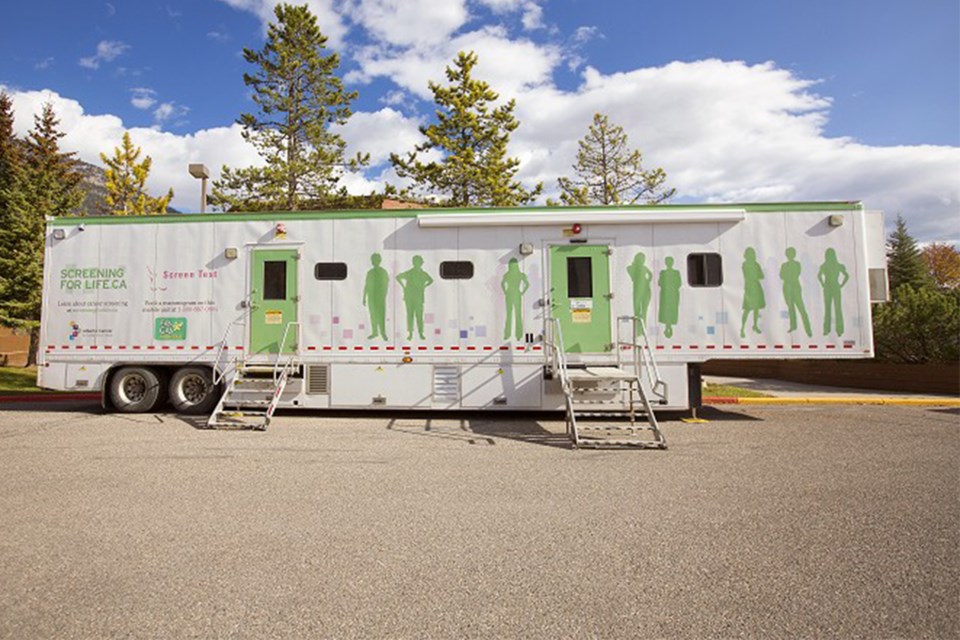SUNDRE — As early detection drastically improves the odds of recovering from breast cancer, women who are considered at risk are encouraged to get regularly screened.
Facilitating that effort by improving access to screening is a mobile mammography clinic delivered through Alberta Health Services’ Screen Test program, which is coming to Sundre later this week and again early next month.
A trailer will be stationed at the Sundre Aquaplex parking lot on July 30-31 followed by another visit from Aug. 3-7. Women aged 50 to 74, who are the demographic most at risk of developing breast cancer, can call 1-800-667-0604 toll-free to book an appointment or learn more about the program.
“The target group is women aged 50-74. Women this age can self-refer,” said Chidinma Okoli, Health Promotion Facilitator II for the Screen Test program, said in response to emailed questions.
Women aged 40-49 can also be screened, added Okoli.
“However, they need to discuss with their health-care provider about breast cancer risk and the need for mammograms.”
Women in the 40-49 age range would require a referral for their first mammogram, but after 50 they can self-refer, she said.
“Women aged 75 and older that are in good health can continue screening, although they need to discuss the risks and benefits with their health-care provider.”
A mammogram, which is an X-ray of the breast that has been proven to be the most effective way to detect breast cancer, is not routinely offered to women under the age of 40, she said.
“If women in this age group have concerns, they can speak to their health-care provider about the right tests for them.”
As a result of improved treatments over the years and decades, early detection not only opens up a greater number of options but also increases the odds of recovery.
“With early detection and better treatment options, most women — almost 90 per cent — are now surviving breast cancer.”
That’s why health-care professionals urge regular screenings for women considered at risk.
“Having routine mammograms is the best way to find breast cancer early, before symptoms develop and when treatment may work better,” said Okoli.
The exams enable physicians to observe changes in the breast tissue over time, which is how cancer is discovered during its early stages, she said.
“Screening mammograms are provided by Alberta Health Services at no cost to the client,” she added.
Signs indicating that a visit to see their doctor and that a test might be recommended include: noticing a lump in a breast or armpit; unusual change in the shape or size of a breast; crusting or unusual rash on the nipple; nipple discharge, especially if bloody; or a nipple that’s turned inward, she said.
“These changes do not necessarily mean a woman has breast cancer, but it is recommended that she sees her doctor right away.”
Although now well into Stage 3 of the provincial government’s economic relaunch strategy, pandemic health protocols are still being observed in the mobile clinics to ensure staff and client safety.
Visit www.screeningforlife.ca/breast to find more resources on breast cancer screening.



